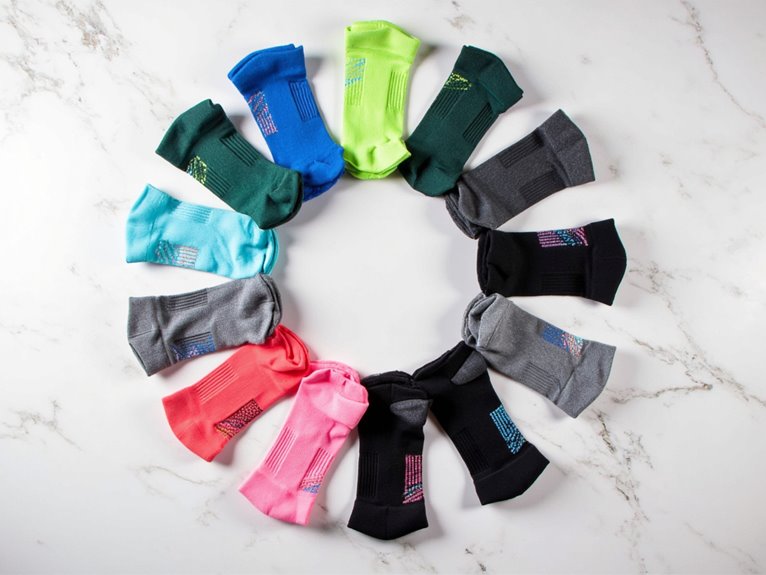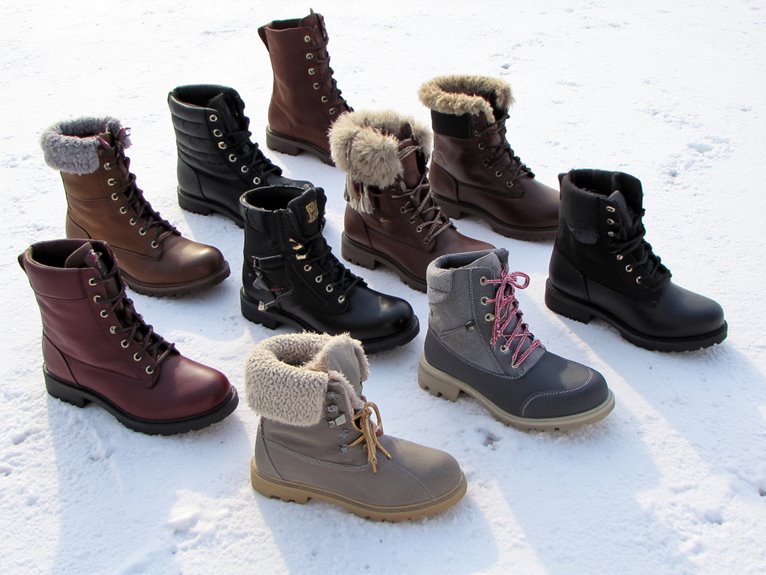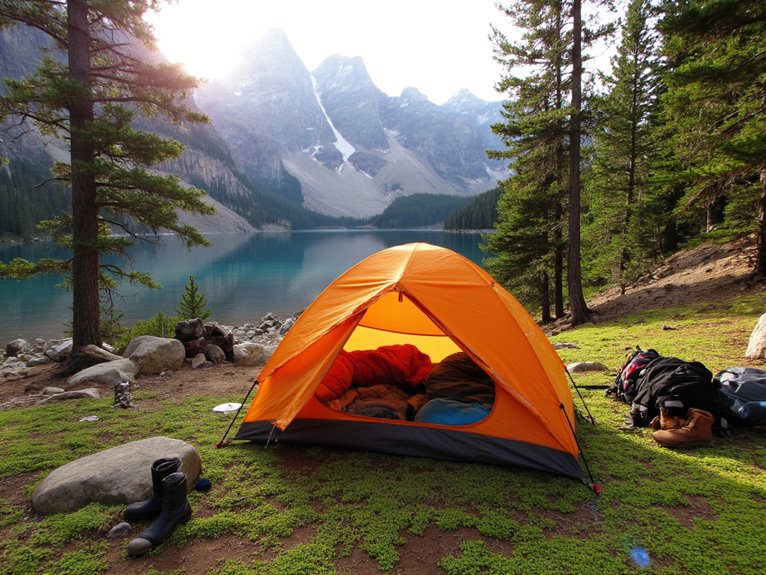How Long Does 450G Isobutane Last?
The lifespan of a 450g isobutane canister is a wild card, influenced by a medley of factors, including storage conditions, stove efficiency, outdoor temperature, cooking habits, and usage patterns. Average burn time hovers around 4-6 hours at moderate heat, but this can vary greatly depending on your camping style. Casual campers might squeeze out 5-6 hours, while culinary enthusiasts might get fewer hours. Want to know the secrets to maximizing your fuel's longevity?
We are supported by our audience. When you purchase through links on our site, we may earn an affiliate commission, at no extra cost for you. Learn more. Last update on 27th December 2025 / Images from Amazon Product Advertising API.
Factors Affecting Isobutane Canister Life
Multiple factors, including storage conditions, usage patterns, and manufacturing quality, substantially influence the lifespan of an isobutane canister.
Proper storage in a cool, dry place away from direct sunlight can notably prolong the life of the canister.
Conversely, exposure to extreme temperatures, humidity, or physical damage can reduce its lifespan.
Usage patterns, such as frequency of use and stove efficiency, also play a role.
A higher-quality canister from a reputable manufacturer will generally last longer than a cheaper alternative.
Stove Efficiency and Fuel Consumption
Optimizing stove efficiency is essential, as it directly correlates with fuel consumption, and a well-designed stove can substantially stretch the life of an isobutane canister.
A good stove should be able to achieve a high heat output while minimizing fuel waste. Look for stoves with features like efficient burners, heat exchangers, and windshields to maximize fuel efficiency.
Additionally, maintaining your stove by cleaning it regularly and replacing worn-out parts can also help reduce fuel consumption.
By choosing the right stove and taking care of it, you can enjoy a longer-lasting isobutane canister and a more enjoyable outdoor adventure.
Outdoor Temperature and Usage
As the mercury drops, the efficiency of your isobutane canister takes a hit, making outdoor temperature a critical factor in determining how long your fuel will last.
In freezing conditions, isobutane's performance slows, and pressure drops, reducing the overall burn time.
Conversely, warmer temperatures can increase fuel efficiency, allowing you to cook for longer periods.
It's essential to take into account the outdoor temperature when planning your cooking schedule.
For instance, if you're camping in the mountains during winter, you may need to adjust your cooking habits to compensate for the cold.
Cooking Habits and Fuel Efficiency
Your cooking style can make or break the longevity of your isobutane fuel, with habits like simmering versus high-heat boiling greatly impacting fuel efficiency.
If you're a 'set-it-and-forget-it' type, simmering away, you'll likely get more mileage out of your fuel.
On the other hand, high-heat boiling enthusiasts will burn through their isobutane stash faster.
Additionally, frequent on-and-off switching can also reduce fuel efficiency.
To maximize fuel life, adopt a 'low and slow' cooking approach and avoid unnecessary flame adjustments.
Average Burn Time of 450g Canister
With a standard 450g canister, you can expect an average burn time of around 4-6 hours at moderate heat, depending on factors such as ambient temperature, wind, and cooking style.
This timeframe assumes you're not trying to win a cooking competition or boil a small ocean.
In reality, the burn time can vary substantially depending on your outdoor adventure.
If you're a casual camper or backpacker, you might get closer to 5-6 hours of cooking time.
However, if you're a culinary enthusiast or cooking for a large group, you might be looking at a shorter burn time.
Just remember, it's always better to have a backup canister or a contingency plan for those impromptu campfire cook-offs.
Real-World Examples of Fuel Usage
In the midst of a camping trip, the last thing you want to worry about is running out of fuel, which is why understanding real-world examples of fuel usage can be a game-changer for outdoor enthusiasts.
Cooking breakfast for a group of four on a chilly morning: 30 minutes of burn time
Boiling water for a solo afternoon tea: 10 minutes of burn time
Melting snow for drinking water on a winter expedition: 20 minutes of burn time
Preparing a hearty dinner for two on a romantic camping getaway: 45 minutes of burn time
Making hot chocolate for a family of five on a cold winter morning: 25 minutes of burn time
These examples illustrate how fuel usage can vary greatly depending on the situation, making it essential to plan ahead and pack accordingly.
Tips for Conserving Isobutane Fuel
By adopting a few simple habits, you can substantially stretch your isobutane fuel supply, ensuring you have enough to last throughout your adventure.
First, make sure to turn off your stove when not in use – it's easy to forget, but it's a fuel-guzzling habit!
Next, use a windscreen to shield your flame from gusty winds, which can reduce fuel efficiency.
Additionally, cook during the warmest part of the day to maximize heat retention.
Finally, keep your stove and pot clean to maintain peak heat transfer.
Planning Your Fuel Supply for Trips
When venturing out on a trip, it's essential to plan your fuel supply to avoid running out of isobutane at the worst possible moment.
To do this, you'll need to estimate your fuel needs and calculate the duration of your trip.
Estimating Fuel Needs
For a stress-free camping or backpacking trip, accurately estimating your fuel needs is essential, as running out of isobutane mid-trip can quickly dampen the mood.
A little planning goes a long way in ensuring you have enough fuel to keep your stove burning bright.
To estimate your fuel needs, consider the following factors:
- How many meals will you be cooking per day?
- How long will your trip last?
- What's the average temperature expected to be?
- What's the altitude of your campsite?
- How many people are in your group, and what's their appetite like?
Calculating Trip Duration
To calculate your trip duration accurately, you'll need to break down your itinerary into daily segments, accounting for rest days, travel days, and activity-packed days that'll impact your fuel consumption.
This will give you a clear picture of how much fuel you'll need for cooking, boiling water, and other daily necessities.
Be realistic about your energy needs – if you're planning a leisurely hike, you might not need as much fuel as you would for a high-intensity adventure.
Remember to factor in any unpredictable variables, like weather changes or unexpected delays.




